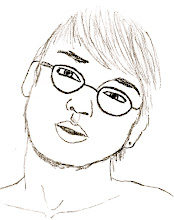Oh, ho, ho. As part of the "Edge"group, the site for my group takes up a lot of space, yet it contains little workable space. Some of my original ideas included planters incorporating the monkey grass at the front of the building, and making walls else where on the site. Kristina R. and I had started out with the idea of using curves and edges when we originally took photographs for precedents to include in the class slideshow.
Working in a group has been much more enjoyable than I expected and I have also gotten to know more people in the class than I knew previously. When my group was more or less shot down with the idea of wall making, I was surprised by the direction we went. Incorporating the four other groups is a challenge and I am pleased with the concept that we have come up with. Our forms now start out as square, angular figures and transition into circular, smooth figures. Paper is much more forgiving than 3d materials! On Monday, we first started to make molds for our concrete. I used several different tools, with help, to make a wooden box. It was a lot of fun. But today, he he. Today we mixed up concrete, using pine needles and Stinky Gink leaves for an aggregate, and filled up our mold. Well, the concrete started to pour out the corners of the mold and the sides of it fell apart! So I ended up having to hold the sides of the mold together while Bray tried to tape up the corners, but the tape wouldn't hold. So then Kristina had to try to scoop the concrete back into the tray so that it wouldn't get everywhere.So, now we are experimenting with using a cardboard mold.











